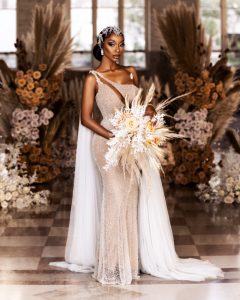How to Become a Flower Designer


Creating floral displays and designs is a beautiful way to express your creativity and bring joy to people. However, it takes a lot of work and training to become a flower designer. As a floral designer, you cut and arrange dried, live, and silk flowers to create decorative displays for weddings and other events. To succeed, you must be able to meet deadlines and be flexible with your schedule.
Start with the Basics
The first step to becoming a flower designer is learning fundamental skills. These include the basics of floral arranging, buying flowers at your local wholesale market, and building a portfolio of your work.
One of the best ways to learn is through online courses. There are many excellent options available for beginners, including Michael Gaffney’s American School of Floral Design courses.
Another option is Skillshare, which offers classes in floral design that range from beginner to advanced. Membership costs $14 per month and includes a free trial to test out the courses before making a commitment.
Once you’ve mastered the basics, start building your portfolio and sharing your work on social media or in printed form. This can help potential clients see what you’re capable of and will give them an idea of your style. It’s also an excellent way to get feedback from your clients and see how you can improve.
Develop Your Creativity
Creativity is one of the most critical skills a flower designer needs. Whether you are designing wedding bouquets, table arrangements, or centerpieces, you have to be able to think outside the box and bring your vision to life.
Having a solid sense of style is also helpful. Whether it is creating a monochromatic arrangement or something more dramatic and vibrant, you have to have a unique design aesthetic that speaks to your clients.
You can learn how to do this by taking courses and reading books. In addition, you can volunteer at a flower shop and greenhouse to learn more about the industry.
Another way to develop your creativity is by learning about composition and design theory. These skills will help you understand the best ways to use colors, shapes, and other elements in your floral designs.
Build a Professional Portfolio
A professional portfolio of your work is a critical tool in securing new clients. It gives potential clients a sense of your skill and creativity as a floral designer.
A floral portfolio may include arrangements in a variety of styles, including bouquets, wedding designs, funeral tributes, and centerpieces. It should also show a range of prices so that clients know what they can expect to pay.
If you are just starting out, it is often best to limit your portfolio to arrangements made with flowers that are widely available. This will help set realistic expectations with your clients and ensure that you do not have to turn down too many requests for unique or hard-to-find flowers.
As a floral designer, it is also essential to focus on your personal style and cultivate it. This means choosing the colors, textures, and floral arrangements that you are most drawn to.
Get Experience
If you’re determined to become a floral designer, you can start by gaining experience as a freelancer or working for a local florist. This will help you understand what the work is like and allow you to develop your own style.
The work of a floral designer involves arranging plants and flowers into visually appealing displays. Florists need a variety of skills to successfully complete orders, including proper communication and time management.
To develop your skills, practice as much as possible, and keep a sketchbook of designs you plan to create. Include the materials and techniques you’d like to use in each design.
You can also gain experience through internships and entry-level jobs at flower shops or grocery stores. Internships will give you valuable experience in the industry, and they could lead to paid positions later.
